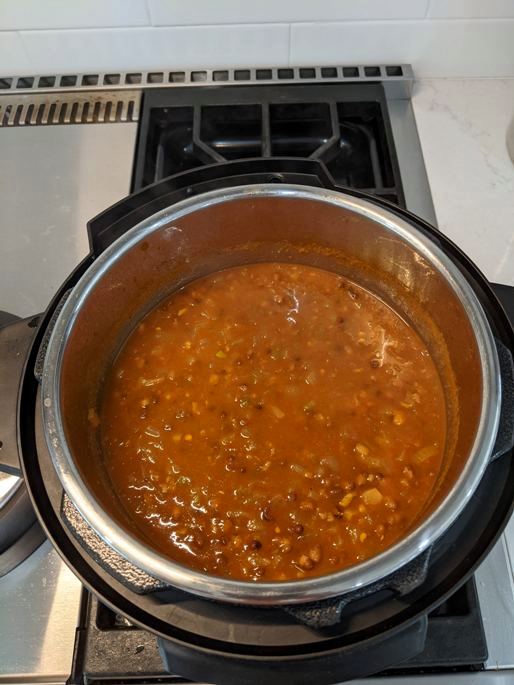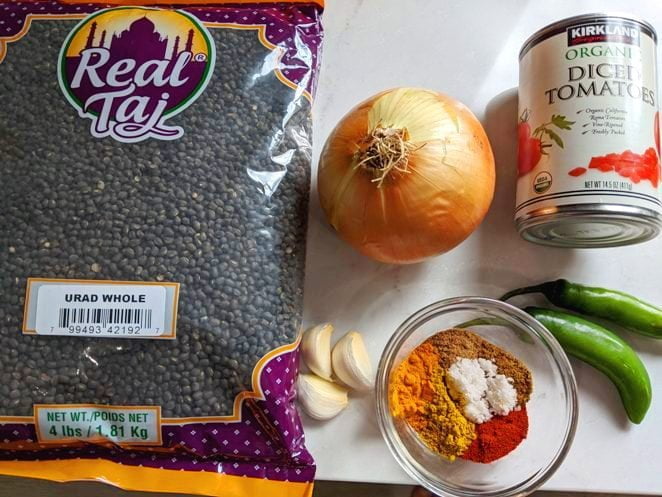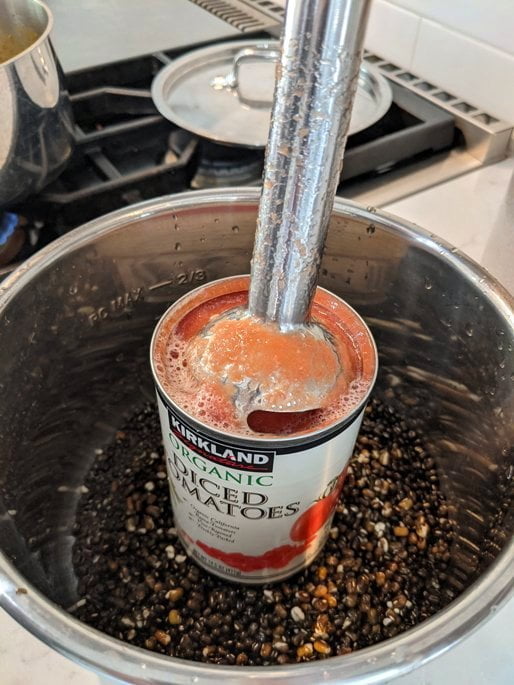After 35 years in clinical practice, I’m still on a neverending quest to create a foundational human optimization protocol. One that provides the best epigenetic influence for most humans and helps optimize mitochondrial biogenesis and function. Basically, what can we do on a routine basis to live longer, healthier, and with more vitality? This is my latest addition to my dietary component; my version of dal makhani – Dr. Ettinger’s Instant Pot Dal Makhani Recipe.
Nearly 2500 years ago, Hippocrates, the father of modern medicine, promoted two profound ideas that are still validated daily: “All disease begins in the gut” and “Let food be thy medicine and medicine be thy food.” We now know that not every disease begins in the colon, but dysbiosis of the microbiome surely does play a part in either its genesis and/or severity.
It is true that humans cannot digest complex carbohydrates—that’s the job of bacteria in our large intestines. Bacterioides can constitute up to 60% of all the bacteria living in our large intestine, and they play an important role in how we get energy. Without them, we’d have a hard time digesting bread, beans, vegetables, or other complex carbohydrates. This is why I created “Dr. Ettinger’s Instant Pot Dal Makhani.” This dish helps to restore or maintain gut health in my patients after their dysbiosis has been handled, as well as in those who want to stay healthy. There is rarely ever a need for supplemental probiotics when your diet can modulate the diversity and abundance of your microbiome.
Note: This is not a recommendation to eat my dal makhani. Pulses, beans, peas, and lentils may be reactive to some people, and/or you may not tolerate them due to undiagnosed or unresolved dysbiosis.
Background Data
- For a very thorough overview of Traditional Indian Functional Foods and their benefits, please read this paper by Krishnapura Srinivasan.
- Eat Your Curry – The role of gut bacteria in modulating gastrointestinal physiology is increasingly being appreciated. In a recent issue of Cell, Dey, et al. (2015) report how a single dietary ingredient—turmeric—interacts with gut bacteria to alter gastrointestinal motility.
- Mixed Spices at Culinary Doses Have Prebiotic Effects in Healthy Adults: A Pilot Study – Mixed spices consumption significantly modified gut microbiota, suggesting a prebiotic effect of spice consumption at culinary doses.
- Twelve Weeks of Daily Lentil Consumption Improves Fasting Cholesterol and Postprandial Glucose and Inflammatory Responses—A Randomized Clinical Trial – daily lentil consumption may be helpful in lowering cholesterol and postprandial glycemic and inflammatory responses without causing GI stress.
- Lentil ( Lens culinaris Medikus) Diet Affects the Gut Microbiome and Obesity Markers in Rat, Niroshan Siva, et., al. J Agric Food Chem. 2018
Abstract
Lentil, a moderate-energy high-protein pulse crop, provides significant amounts of essential nutrients for healthy living. The objective of this study was to determine if a lentil-based diet affects food and energy intake, body weight, percent body fat, liver weight, and body plasma triglycerides (TGs) as well as the composition of fecal microbiota in rats. A total of 36 Sprague-Dawley rats were treated with either a standard diet, a 3.5% high amylose corn starch diet, or a 70.8% red lentil diet for 6 weeks. By week 6, rats fed the lentil diet had significantly lower mean body weight (443 ± 47 g/rat) than those fed the control (511 ± 51 g/rat) or corn (502 ± 38 g/rat) diets. Further, mean percent body fat and TG concentration were lower, and lean body mass was higher in rats fed the lentil diet than those fed the corn diet. Fecal abundance of Actinobacteria and Bacteriodetes were greater in rats fed the lentil or corn starch diets than those fed the control diet. Fecal abundance of Firmicutes, a bacterial phylum comprising multiple pathogenic species, decreased in rats fed the lentil and high-amylose corn starch diets vs the control diet. The lentil-based diet decreased bodyweight, percent body fat, and plasma triglycerides in rats and suppressed intestinal colonization by pathogens.
Dr. Ettinger’s Instant Pot Dal Makhani Recipe – No Kidney Beans
- 1 cup urad dal (Vigna mungo); or black lentils, also known as beluga lentils; or any lentil you can easily find.
- 1 medium brown onion – diced.
- 1-2 serrano or jalapeno peppers – finely diced (optional)
- 1 can organic diced tomatoes – as is or use an immersion (stick) blender to puree.
- 4 large garlic cloves – finely diced or pressed.
- 2 tsp fresh ginger (leave the skin on) – finely diced.
- 4 Tbsp extra virgin olive oil.
- 1 tsp each: coriander powder, cumin powder, chili powder, curry powder, turmeric powder, and Baja Gold Sea Salt.
- 3 – 3.5 cups Water.
Ettinger’s Instant Pot Dal Makhani – Step 1: Soak the urad dal for 12 hours. Rinse them in a mesh strainer and soak them again in fresh water for another 12 hours. When ready to prepare the dish, drain and rinse the dal. Set them in the Instant Pot. Note: Soaking the lentils for 24 hours can be quite effective for reducing phytic acid, an antinutrient, as well as consequent increase in mineral bioavailability (Perlas and Gibson 2002; Coulibaly et al. 2011). This method involves the complete submergence of grains in water for a certain amount of time period, which results in the activation of endogenous phytases. Avoid gas, bloating, cramping, and indigestion after eating pulses with these effective tips.
Ettinger’s Instant Pot Dal Makhani—Step 2: Dice 1 onion, 1-2 serrano chilies, 3-4 garlic cloves, and 2 tsp of ginger w/peel.
Ettinger’s Instant Pot Dal Makhani—Step 3: Add 4 tbsp extra virgin olive oil and all of the spices to a pot. Cook over medium heat for 5 minutes, being careful not to burn the spices.
Ettinger’s Instant Pot Dal Makhani—Step 4: Add the onions, chilies, garlic, and ginger. Cook until the onions have softened, about 10 minutes.
Ettinger’s Instant Pot Dal Makhani—Step 5: Add the can of diced tomatoes to the Instant Pot, insert the immersion (stick) blender, and puree.
Ettinger’s Instant Pot Dal Makhani—Step 6: Pour the tomato puree into the vegetable and spice mixture. Deglaze the pot and then pour the entire mixture into the Instant Pot. Add 3-4 cups of water. The more water, the more broth (runny consistency). Set the lid and use the automatic pressure cooker setting (make sure to allow the lid to vent). In a little over an hour, it will be done.

Ettinger’s Instant Pot Dal Makhani—Optional Steps: You can do as many of the steps below as you like or skip any.
- Add 1-3 tsp coriander powder to the entire pot of finished dal for a more vibrant flavor.
- Add 1 Tbsp of whole-fat sour cream or heavy whipping cream to your bowl of dal and stir.
- Add chopped cilantro to your bowl of dal.






This recipe is so delicious, we have eaten it twice now! Do the tomatoes become acidic when being under pressure in the pressure cooker i.e. from overheating?
Josie,
Im glad you like it. As far as what pH change the tomatoes undergo, I’m not sure. I worry more about the totality of bad and good. I feel that as long as I get proper sleep, exercise, light, and experience love and gratitude regularly, something like an acidic tomatoes doesn’t even come up on my radar.
Respectfully,
Dr. Ettinger